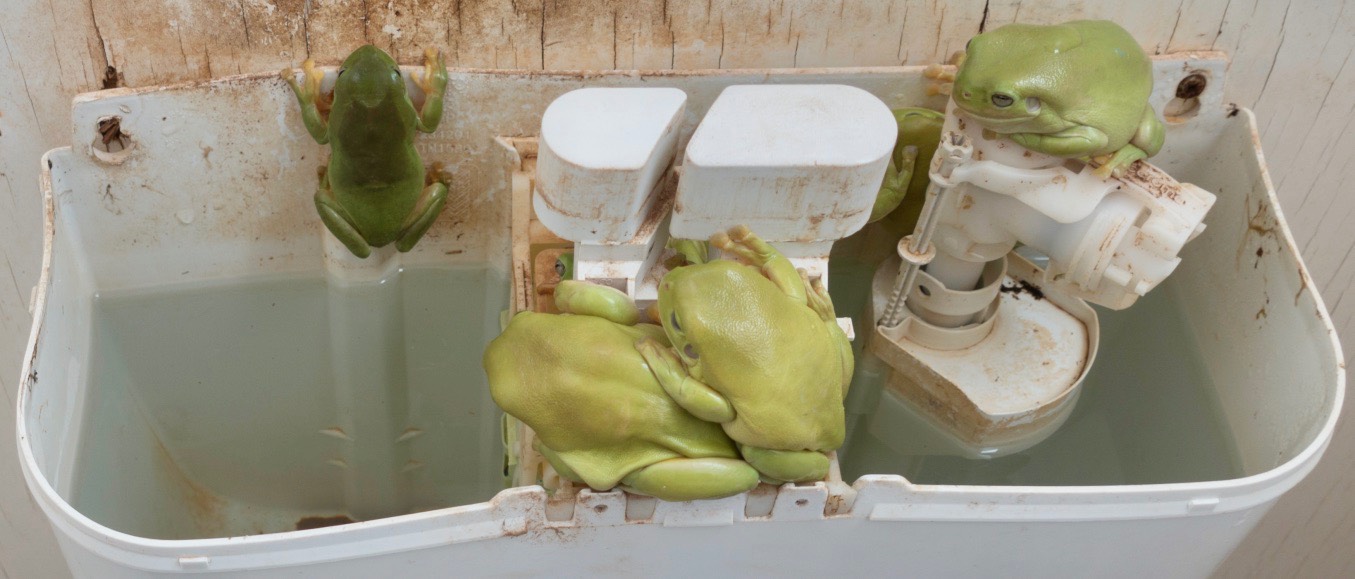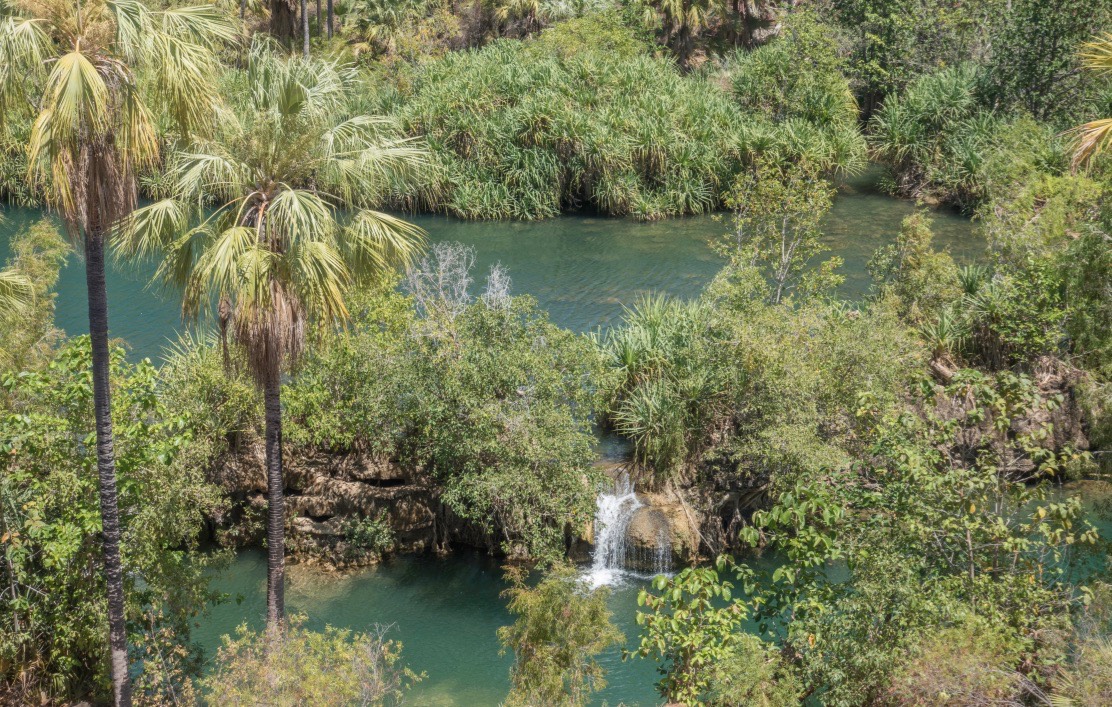 So far we have mostly seen dry, sandy riverbeds along the Savannah Way. But at Gregory Downs there are some really nice free camping spots along the gurgling, clear water of the Gregory River.
So far we have mostly seen dry, sandy riverbeds along the Savannah Way. But at Gregory Downs there are some really nice free camping spots along the gurgling, clear water of the Gregory River.
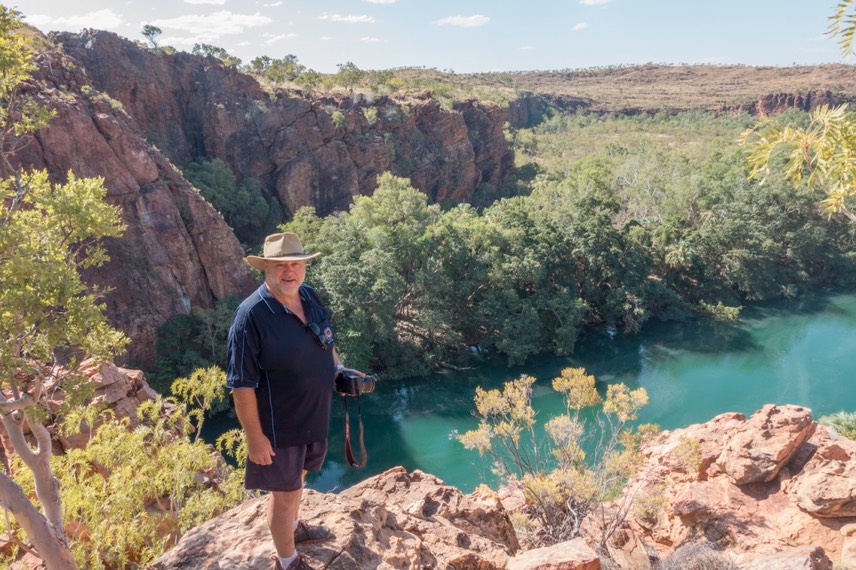
An hours drive from there, over spiky spinifex and turpentine bush lined dirt roads, lays Adels Grove, a beautiful, shady camping/caravan area just outside of Lawn Hill National Park. The Lawn Hill Creek flows by the camp sites and offers refreshing dips. And boy- did we need it! On the day of our arrival the temperatures hit 38℃ and stayed at 37℃ until 6pm.
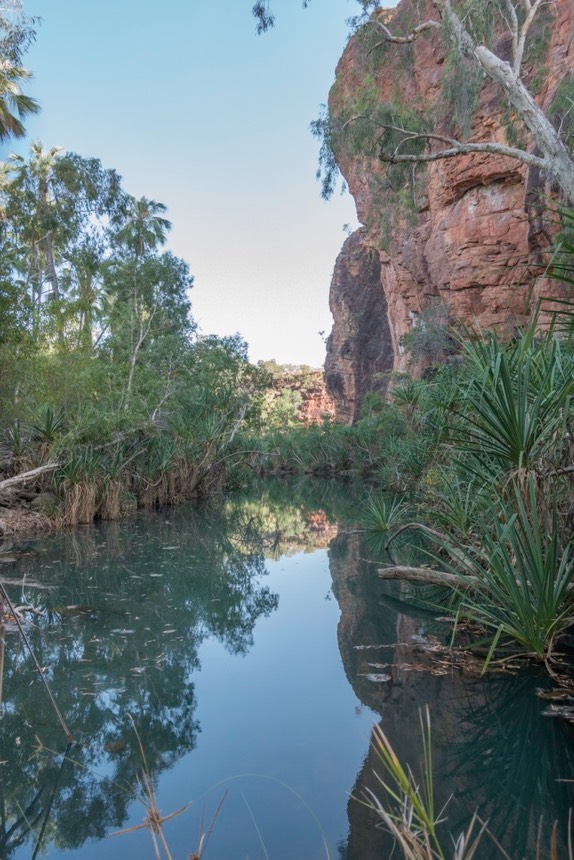
The Robinsons, of course, are not for idly lounging around the camp! And so, after pitching our swag and a quick swim in the river, we drove to Lawn Hill Gorge and took on the steepest of the walks, to Duwadarri Lookout. The view rewarded us. It was spectacular. The Budjamulla, as the gorge is called by Aboriginals, is a lush oasis in midst of a greatly inhospitable landscape. Budjamulla is the Rainbow Serpent, which the local Waaniy people believe lives at the far, shallow end of the gorge where no tourist can go. The Waaniy believe that if the nature and purity of Lawn Hill should be disturbed, the creative, life sustaining Budjamulla will just get up and leave.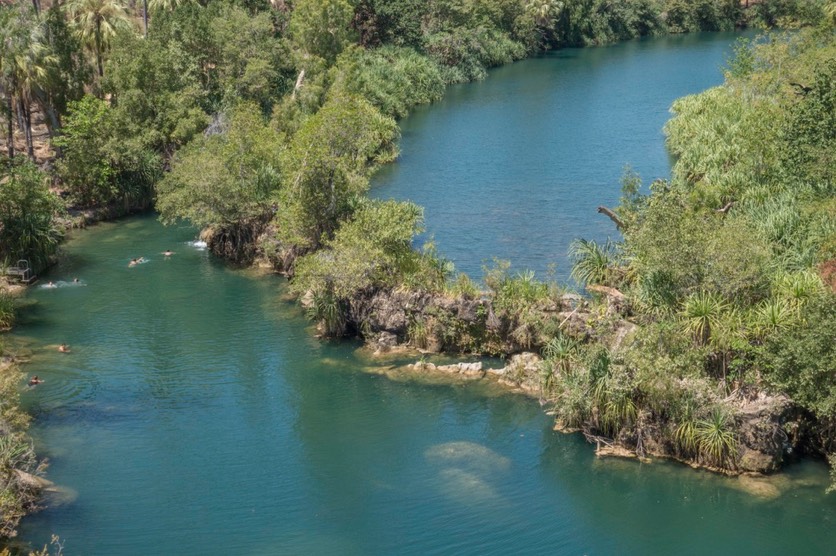
On day two we walked to a second lookout from where we could see the upper gorge laying 2 metres above and separated from the middle and lower gorge by a wall of Tufa over which the water gently cascades down. The water has a bright emerald colour. This is due to an algae fed by the rich minerals of the red sandstone which the water has permeated and carved out over the last 30 million years.
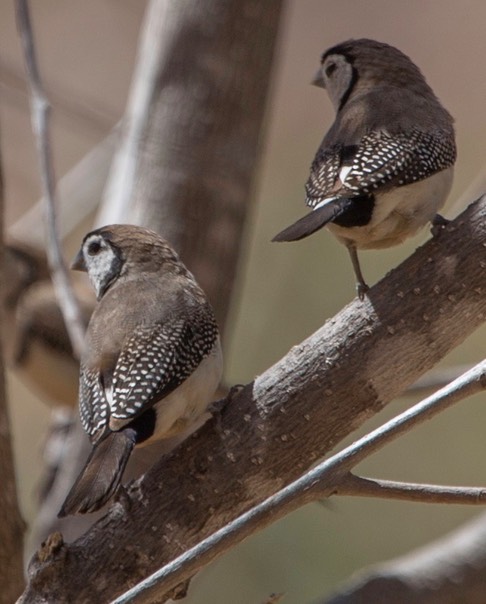
From a dedicated Savannah guide we learned that the tall palms (livingstonia) are only found here and that the turpentine bush has its name from the black smoke and turpentine smell it gives off when burning. The plants around in the park have interesting features and usages. For example the sandpaper fig has leaves which really feel exactly like sand paper and have been used by Aboriginals to smooth wooden implements while the red resin of the bloodwood tree was used for wound healing and, boiled with honey, eased all kinds of stomach ailments. What a magical place full of bush tucker, bush medicine and beautiful bird life!
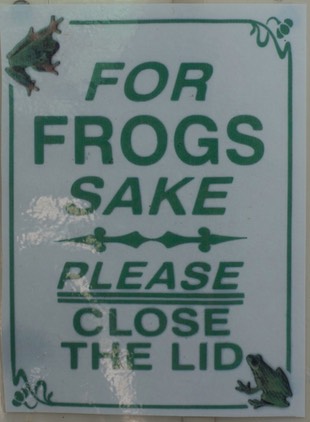
Back at Gregory Downs, where we had left the caravan, we found a strange sign hanging above the unloved toilets.
When Austin later saw some goggly eyes looking at him from a gap behind the cistern, he lifted the lid and you can see what he found.
Apparently toilets are an attractive “hang-out” for some locals!
Safe to say, we didn’t have frog legs for dinner that night!
